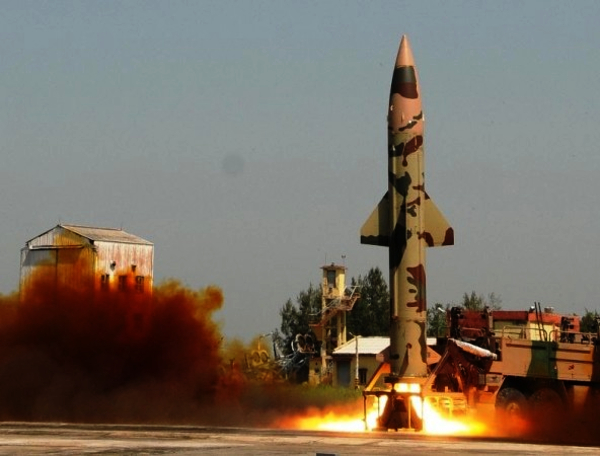India on Friday successfully conducted another night trial of its nuclear-capable Prithvi-2 missile as part of a user trial for the armed forces from a test range in Odisha coast. Friday evening’s user trial was carried out by the Strategic Force Command, people familiar with the matter said.
The liquid-propelled Prithvi-2 has a range of 250 km and can carry a 1 tonne warhead. It is India’s first indigenous surface-to-surface strategic missile.
The trajectory of the missiles was tracked by a battery of long-range, multi-function radars and electro-optic telemetry stations at different locations.
This is the second night trial of Prithvi-2 in less than three weeks. The DRDO had quietly carried out another round of night trial of the nuclear missile on 27 September.
The flight test of the surface-to-surface missile is the 11th missile test by India’s Defence Research and Development Organisation in 40 days. The last one hadn’t ended very well and DRDO scientists had to abort the Nirbhay cruise missile that was launched from Odisha’s test facility into the Bay of Bengal eight minutes later.
The Prithvi-2 missile met all parameters during the user trials conducted late on Friday, a top government official said. “The night trial was successful,” the official said.
The state-of-the-art missile uses an advanced inertial guidance system with manoeuvring trajectory to hit its target.
In the past too, the Strategic Force Command of the armed forces has executed night trials under the watch of DRDO scientists as part of a training exercise. The missile has already been deployed.
Source: HT
You may also like
-
IAF Aircraft Set Course For Exercise Eastern Bridge VII At Oman
-
IAF Set To Host The Indian Defence Aviation Exposition-II At Jodhpur
-
Defence Secretary to co-chair 5th India-Philippines Joint Defence Cooperation Committee meeting in Manila
-
Simultaneous Launch Of ‘malpe And Mulki’, Fourth And Fifth Ships Of Asw Swc (Csl) Project
-
Aatmanirbharta in Defence: MoD signs Contract with HAL for 240 AL-31FP Aero Engines for Su-30MKI Aircraft
